Baby sleeping in your room in a bassinet? Wondering when to transition them to a crib in their nursery? Here’s guidance for when to do it and 10 tips to help the transition go smoothly.
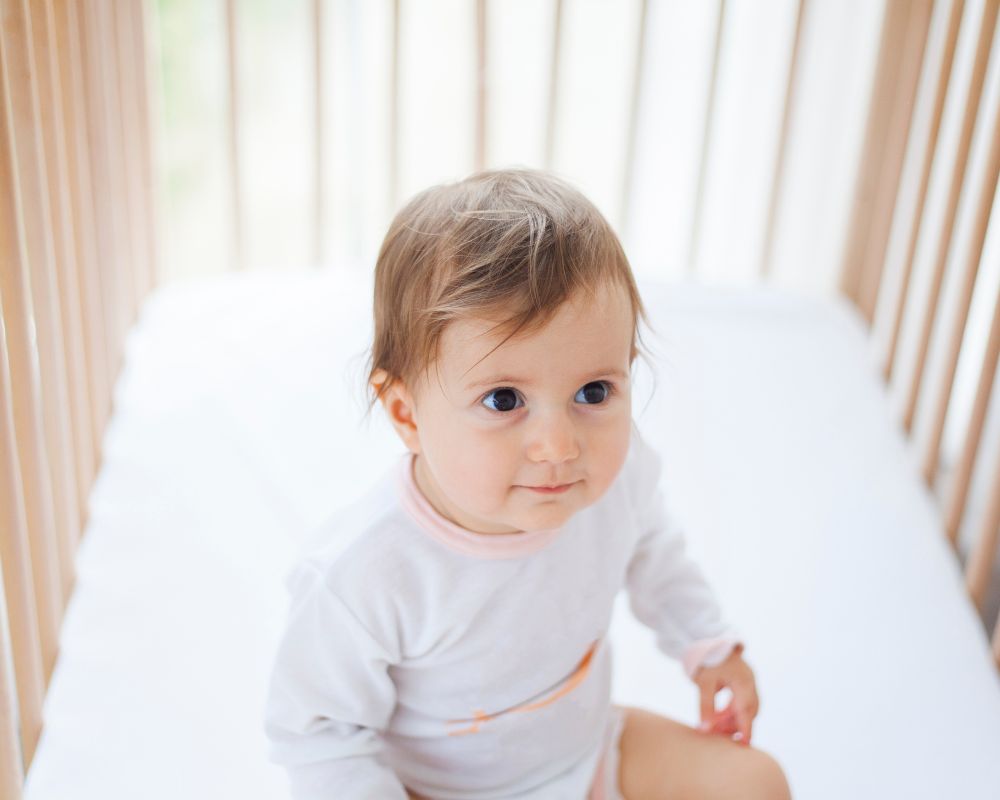
Are you ready to transition your baby out of your room?
If you’re wondering how to transition your baby to a crib here are tips on when is the right time to make the transition as well as tips so you can successfully transition your baby to sleeping in her own crib, in her own space.
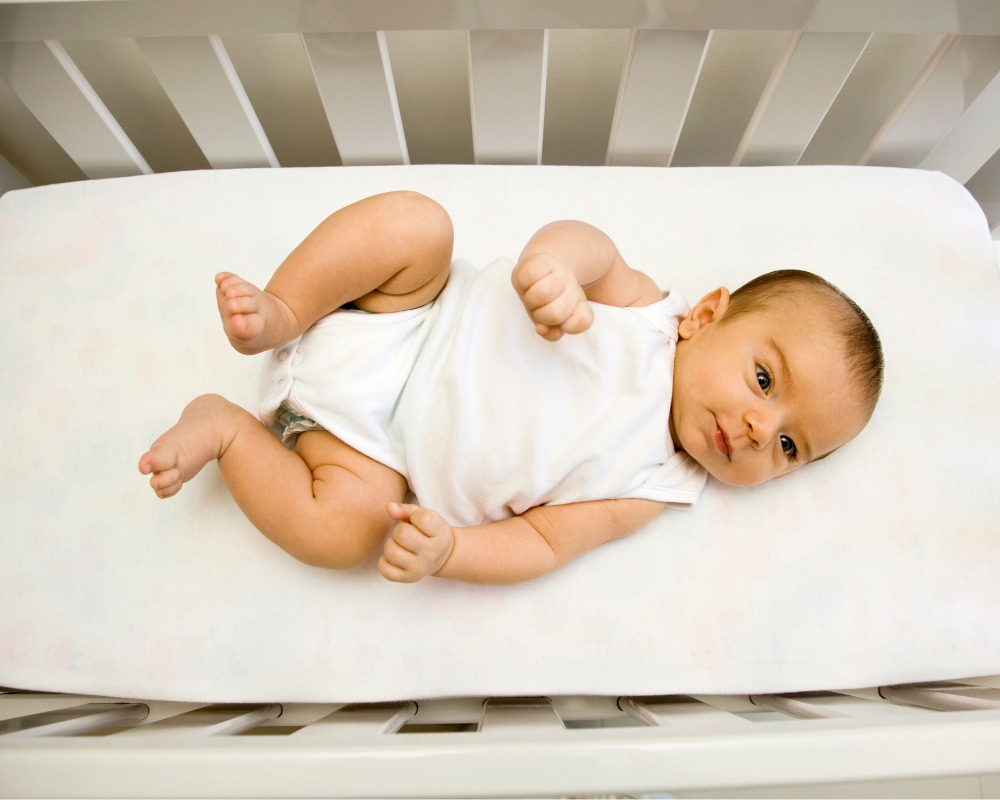
When Should A Baby Move from Bassinet to Crib?
When to move your baby into their own room is such a personal decision for each family, so there’s no cut and dry age.
There are some factors that can help you make the choice that’s right for your family, though.
AAP Recommendations
The American Academy of Pediatrics recommends room sharing for at least the first six months of age to help reduce the risk of SIDS.
Baby’s Weight and Development
Every bassinet has a weight or length limit. Make sure to check the limits on your child’s bassinet to keep them safe.
Most babies start to outgrow their bassinet between 3 and 6 months. Your baby may get too big for their bassinet to where it’s no longer safe for them to sleep in it.
Your baby may also hit developmental milestones and need to be transitioned out sooner.
For example, once your baby starts rolling over, it’s also time to move them out of the bassinet.
Personal Choice
Many people decide to transition their babies to a crib sooner than the AAP recommendations, solely based on the fact that babies are so loud when they sleep. While other parents keep their babies in their room with them through baby’s first year.
For me, I never slept well when our daughter was in such close proximity. Every little noise, sound, or movement she made had me jumping up to check on her.
The AAP has also published research saying that babies 4 months old who didn’t room share slept better than babies who were room sharing.
Whatever age you decide to transition your baby, do your research and make the best decision for your family.
Video on Bassinet to Crib Transition
Watch the video below where Amy will answer when to transition your baby to the crib and how to make the transition a seamless one. Sometimes it helps to hear someone explain it versus reading a blog post.
Bassinet vs Crib
If you plan on moving baby out sooner rather than later, you might be wondering if you need a crib and a bassinet.
The AAP says that a crib, bassinet, portable crib, or play yard is recommended for infant sleep, as long as it meets the safety standards of the Consumer Product Safety Commission (CPSC).
It’s not necessary to have a bassinet and a crib for your newborn, but many families prefer having both, due to a few key differences.
If your baby is in your room with you, you’ll likely want something more compact and portable than a crib, which is why many families opt for a bassinet initially and a crib for later use once parents are ready to make the transition.
I personally never had a bassinet and used a pack and play instead for the short time my daughter was in our room.
How Do I Transfer My Baby from Bassinet to Crib?
Moving your baby into their crib can be a big change for new parents. Follow these 10 tips to help you make a smooth transition and avoid your baby hating the crib.
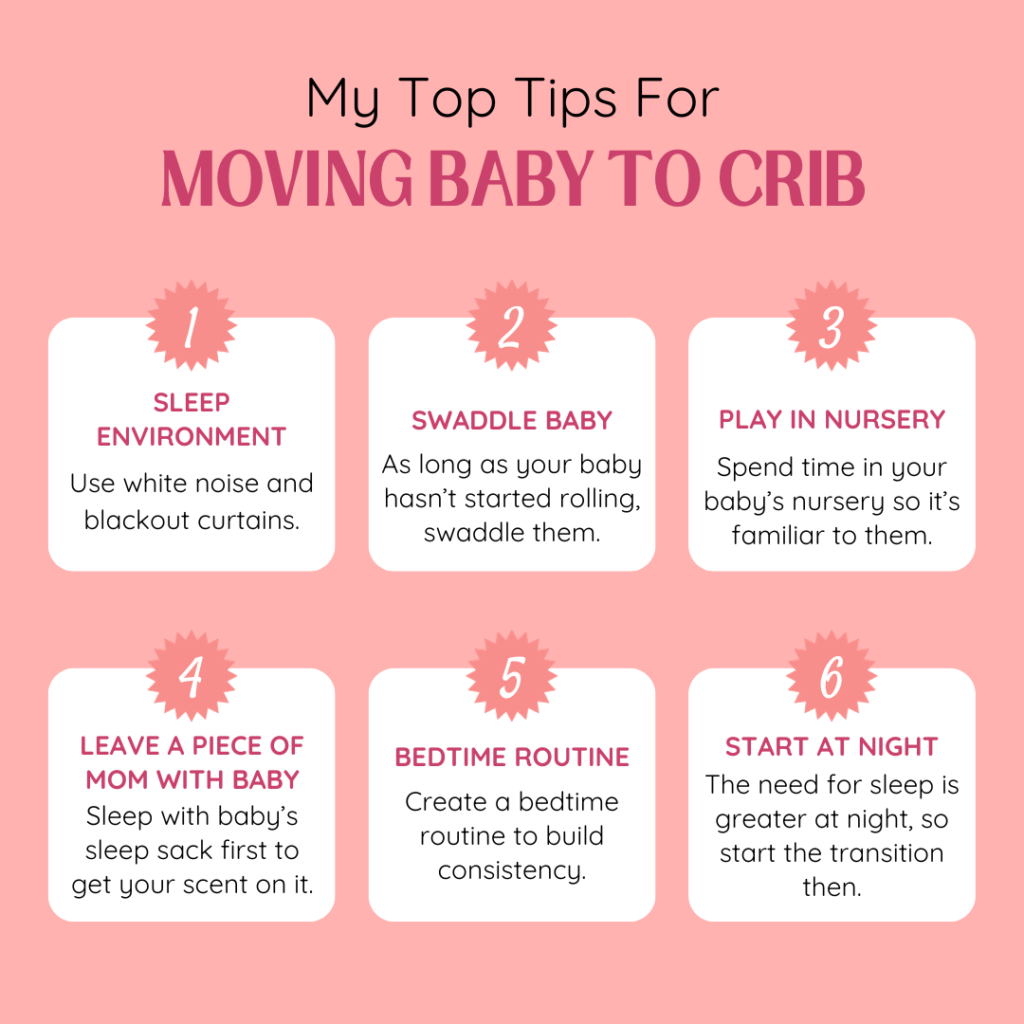
1. Start with Safe Sleep
A baby’s crib is one of the safest places for your baby to sleep in. As you think about transitioning your baby to a crib, make sure to follow the abcs of safe sleep for your baby. This includes:
- Baby’s crib area is free from toys, bumper pads, pillows, and stuffed animals. Loose objects can be a suffocation hazard so keep the crib bare for baby’s safety.
- A crib mattress that is firm and flat, Make sure your crib sheet is tight fitting inside the crib.
- Use a swaddle or sleep sack to keep your baby warm at night. See some of the best swaddle options and best sleep sacks here.
- Make sure to place your baby on her back to sleep each time. Once your baby is rolling over in sleep onto her side or stomach, she is okay to stay that way.
2. Create a Good Sleep Environment
I’ve found creating an optimal sleep environment in your baby’s nursery is one of the easiest ways to help them sleep better. Create a cozy and soothing environment for them that is conducive to sleeping and includes:
- Blackout curtains to make the room pitch black. You shouldn’t be able to see your hand in front of your face when the lights are turned off.
- No nightlights, or light projectors on the wall or ceiling.
- A white noise sound machine that runs continuously. (Babies are used to loud white noise from being in the womb). These are the best sound machines for babies.
- A cool temperature room (between 68 and 72° F) as well as baby dressed comfortably for sleep. Babies are often overly dressed and too warm. Check the TOG rating if you want to know what’s appropriate.
3. Swaddle Your Baby
That crib is an awfully big space for your little baby. It might feel gigantic to them if they’re used to sleeping in a rocker or bassinet. Help them feel safe and snug by using a swaddle each night.
Swaddling can help keep babies from waking themselves and provides a nice, cozy environment like they were used to in the womb.
I have some tips if you think your baby hates being swaddled.
If you’ve already transitioned your baby out of the swaddle, then you can use a sleep sack or Zipadee-Zip as a cue for sleeping and a way to keep baby warm without loose blankets.
4. Make The Nursery Familiar
One of the best ways to get your baby acquainted with their new environment is to spend time during the day playing, changing, feeding, and snuggling—all in their nursery.
You can do tummy time in the crib while you cheer her on. Or put some baby toys in the crib and play with her while she is in the crib, awake.
All of this will help your baby get more familiar with the sights and smells of the new room and help her transition to the crib better.
5. Make the Crib Feel Like Mom
If your baby is used to falling asleep in your arms, then you can make the crib feel a little more like you, so your baby has a positive association with the crib.
Try sleeping with your baby’s swaddle or sleep sack for a few days before you make the transition. You can also sleep on your baby’s crib sheets before moving them onto the crib.
6. Start A Bedtime Routine
Start a consistent bedtime routine with your baby. This helps them learn good sleep habits and wind down for the day. Your baby will start to recognize the sleep routine and learn to associate it with sleep.
Your bedtime routine can include:
- Giving baby a bath
- Final feeding
- Reading bedtime stories
- Swaddle or sleep sack
- Goodnight kisses
I loved implementing a bedtime routine early on. It also helped a ton whenever grandparents or babysitters would put our baby to bed. The routine was the same so she knew bedtime was following at the end.
7. Do the Bedtime Routine in the Nursery Before you Transition
Once you have your bedtime routine down, it’s a good idea to do the entire routine in the nursery for a few days before you’re ready to make the transition.
You can put on your baby’s pajamas, read books, do one last feeding, and give snuggles and then bring your baby to your room for 3 to 4 days. This will create happy memories of her nursery and help ease the transition.
8. Choose A Sleep Training Method / Soothing Method
If you’re transitioning your baby into the crib after four months old, and want to sleep train, make sure to read the different sleep training methods and choose one that works for your baby and your personality.
If your baby is under four months old, or you don’t want to sleep train, you can use the steps of the Soothing Ladder to help baby fall asleep in their crib.
Stay consistent with whatever approach you decide. Your baby will become more familiar and comfortable with the crib the more she is exposed to it.
9. Start With Nighttime
The need for sleep is greater at night, so I always have families start big changes at night time as opposed to nap time.
Everyone has a much better chance of falling asleep at night, versus working with a small nap time opportunity.
10. Pause for a Minute
Sometimes babies just need a minute to settle. Often, babies will cry a bit in their sleep as they connect their sleep cycles. If you hear your baby having a hard time in the middle of the night, take a pause to see if she really needs you.
If you always rush in, that will become the norm. Sometimes babies just need a minute or two to resettle.
Get Better Sleep with The Baby D.R.E.A.M. System
If you want someone to walk you through the process of sleep training, let me help. The Baby D.R.E.A.M. System is for babies 4 months through 2.5 years old. I’ll walk you through how to establish daily routines, sleep schedules, and sleep training techniques to help you break the sleep associations you no longer find beneficial! Check it out here.
Make sure to pay attention to your baby’s growth and physical milestones and know when to lower the crib as she starts to move and grow!
Good luck transitioning your baby to her crib! Once she starts sleeping in her own room and through the night, you’ll feel like a whole new person.

- 4 Reasons Your Baby Only Naps 30 Minutes (And What to Do) - April 22, 2024
- Sample 8-Month-Old Sleep Schedule (With Naps, Feeds, and Solids) - April 22, 2024
- Test - April 18, 2024
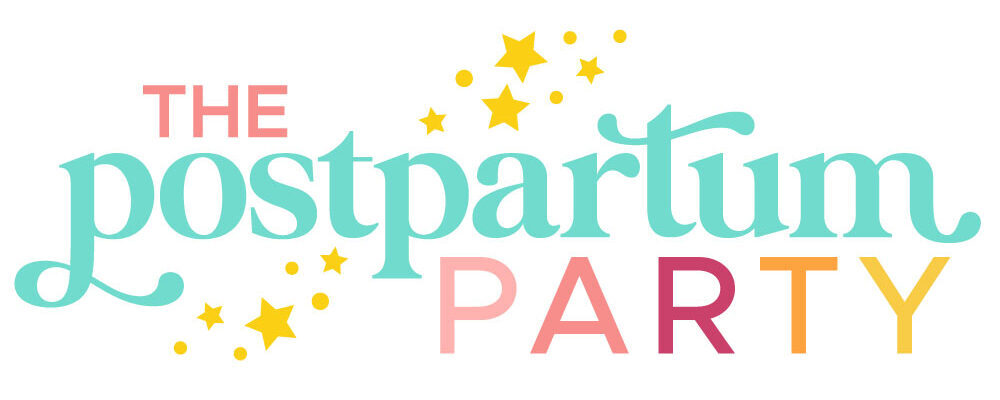





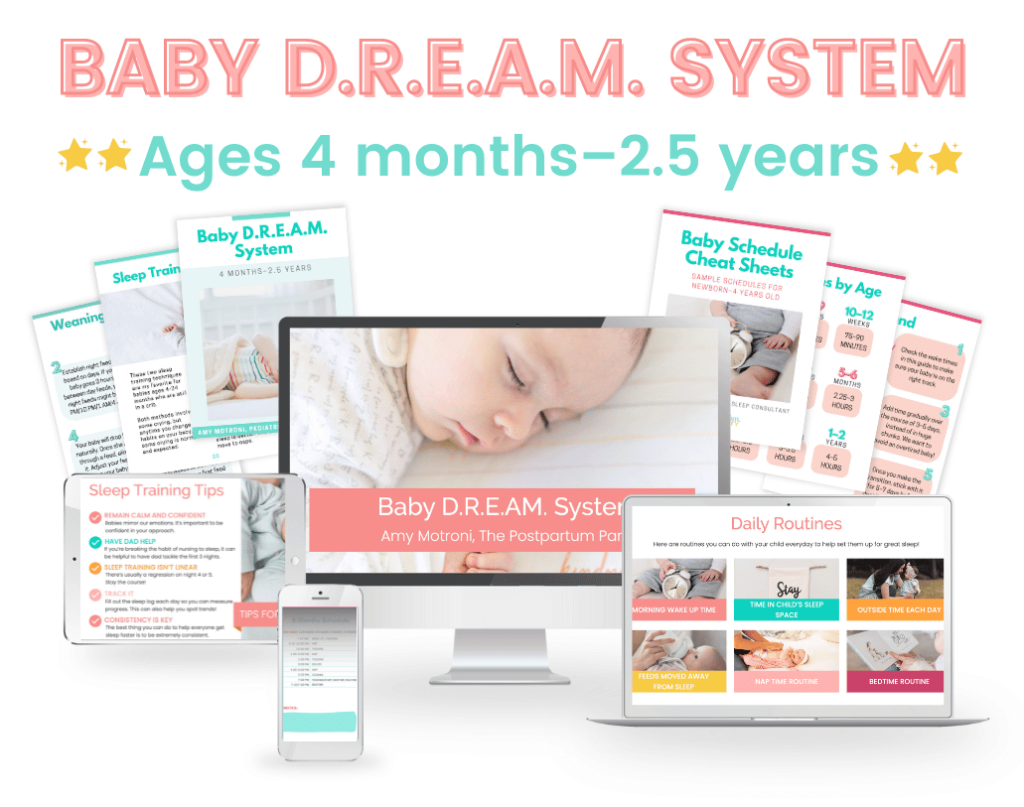
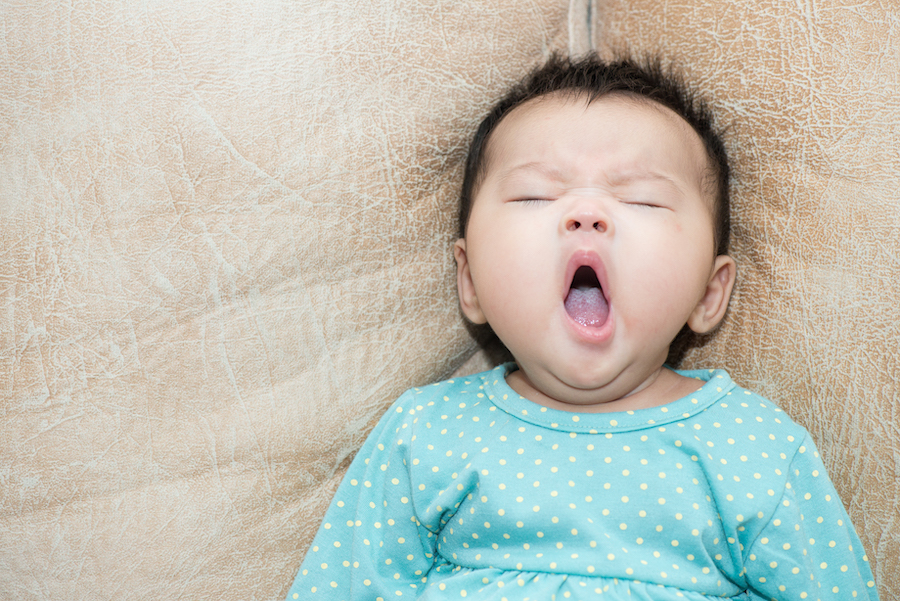
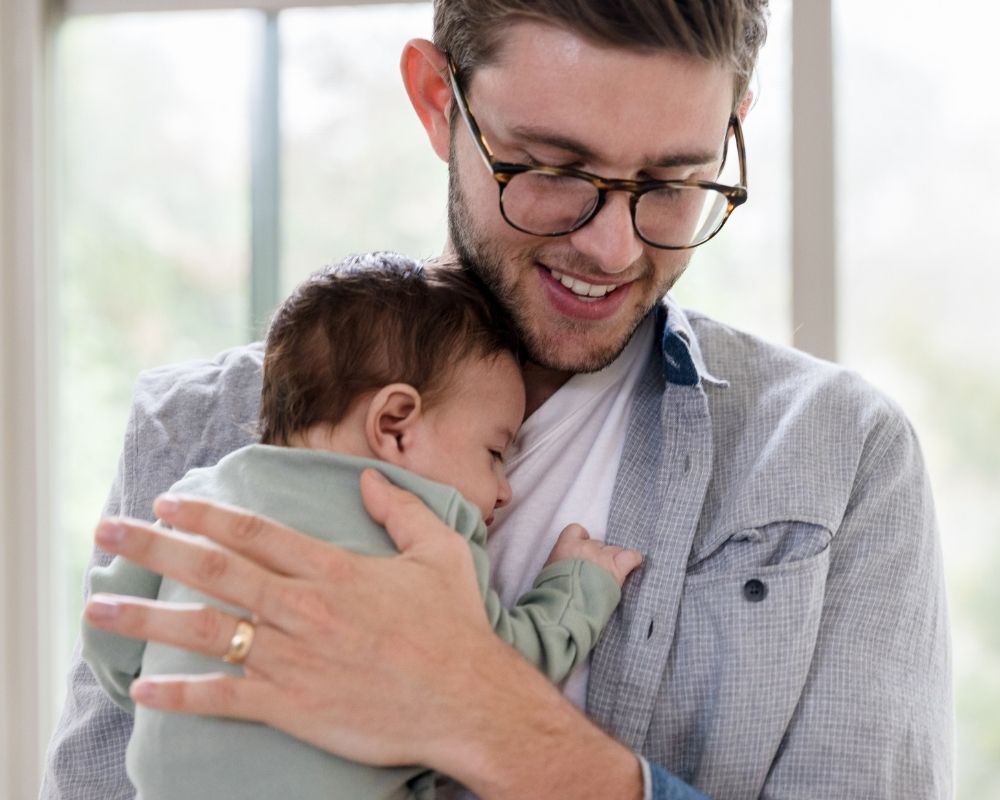
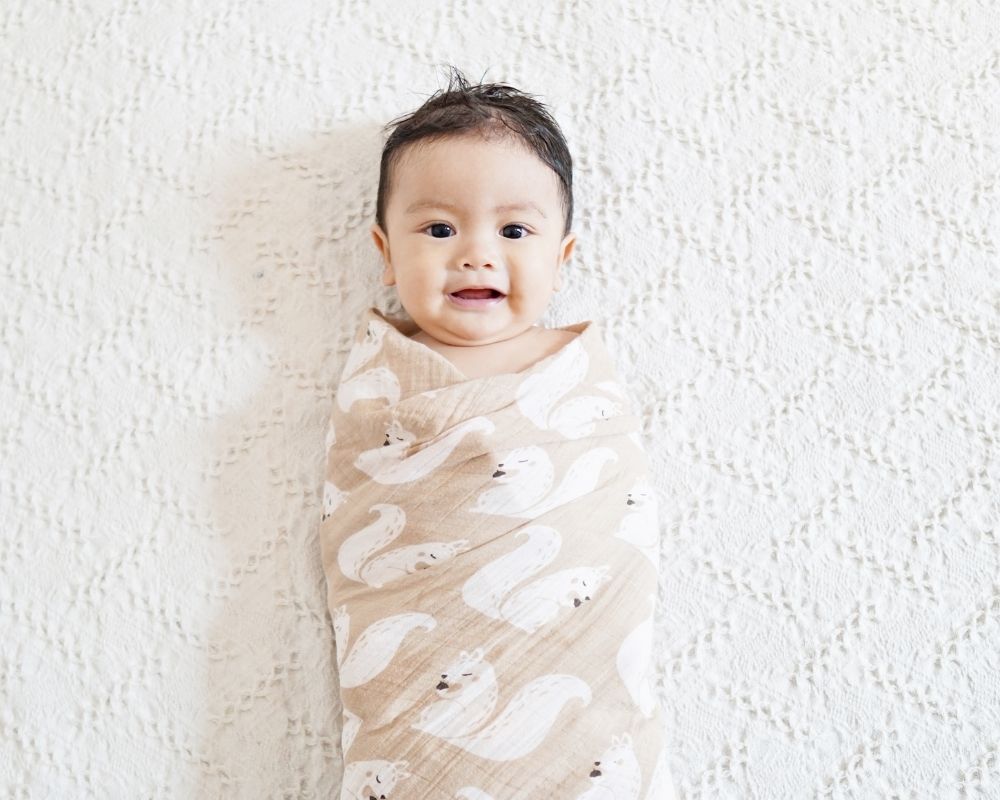
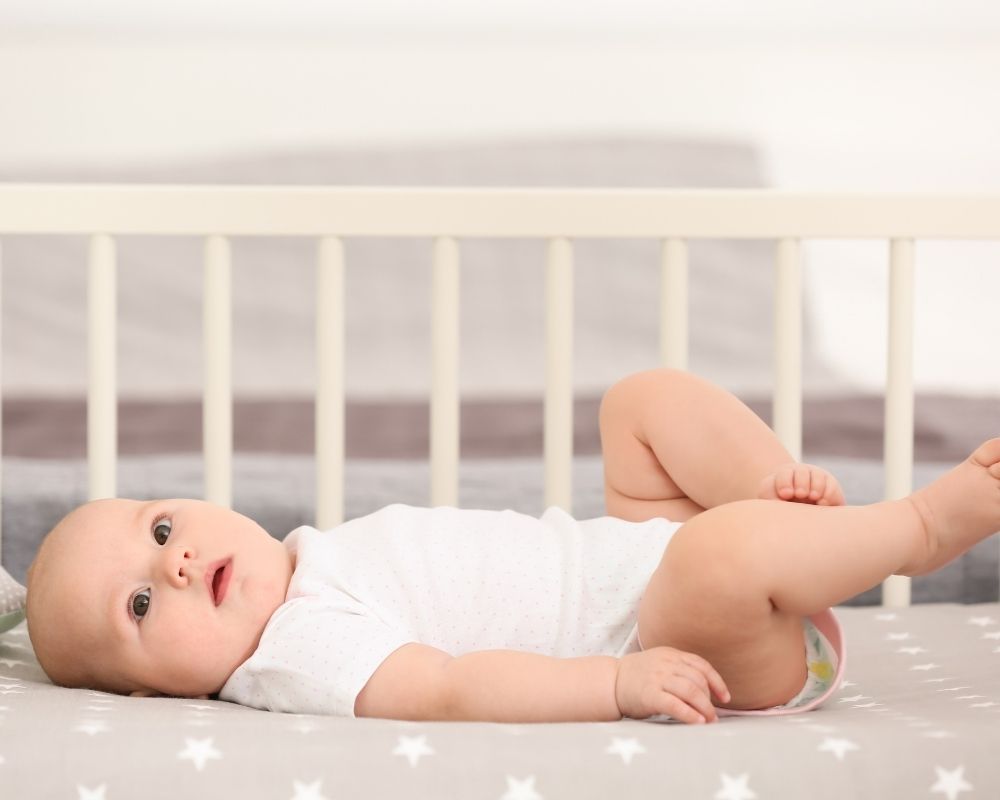
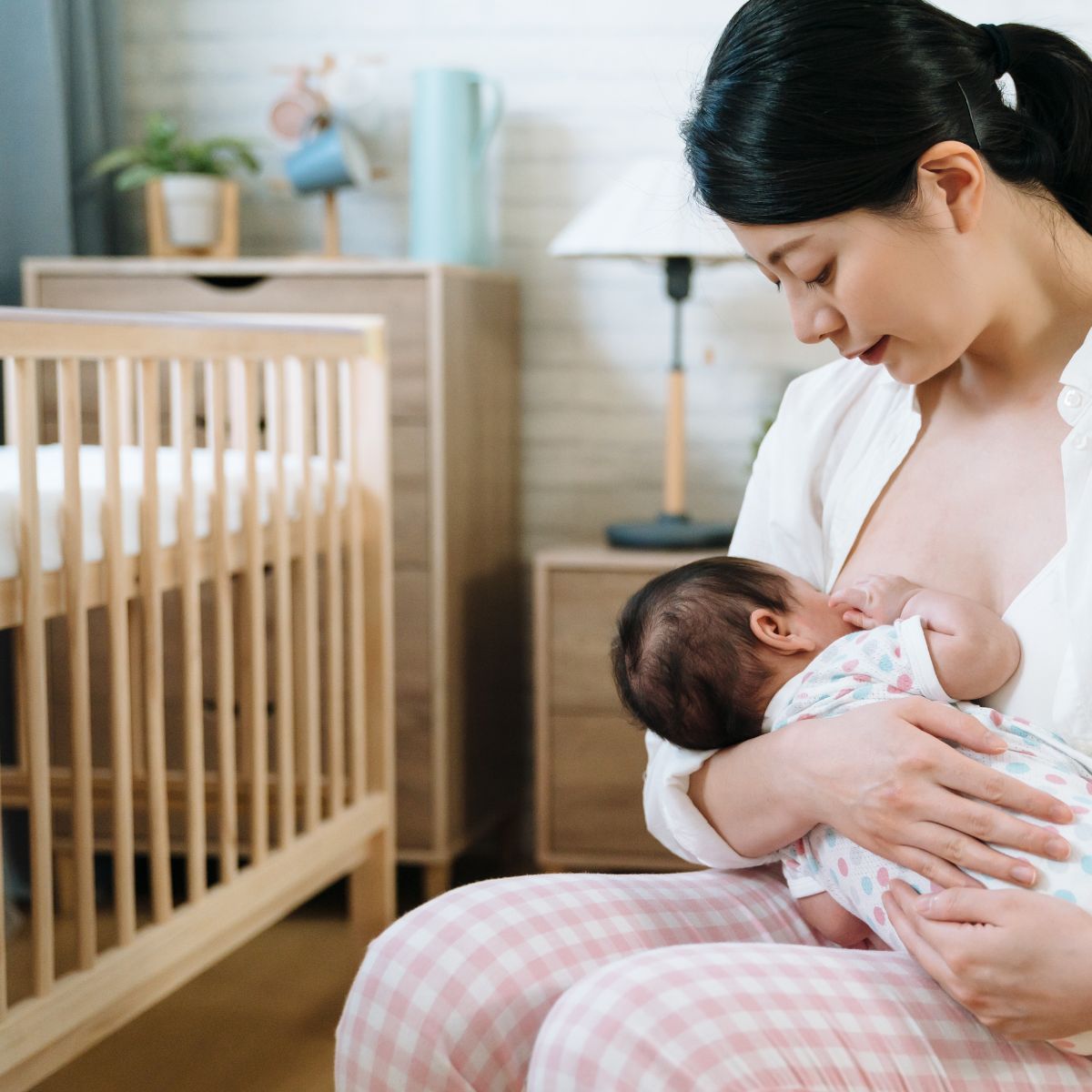
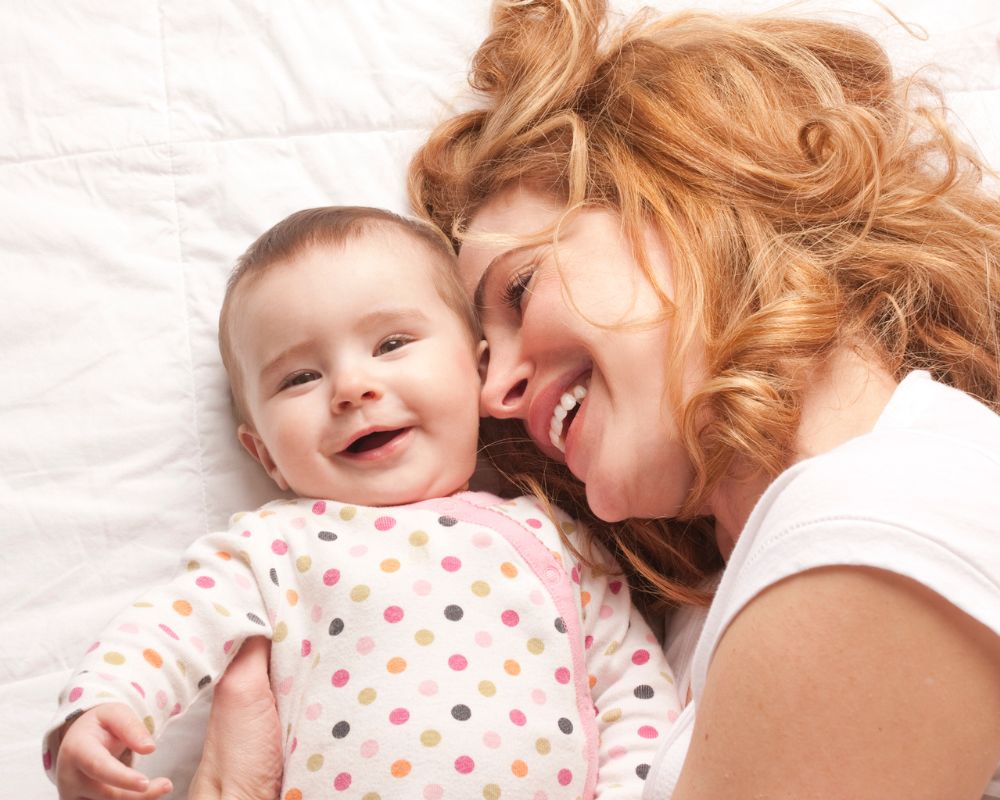
I’ve been trying to transition our daughter to her crib during daytime naps and am failing so far (she’s our second and we never had this issue with our first). I’m going to try your advice of starting with the nighttime transition first! Hope it works!!!
Good luck Jamie! I hope it goes well for you!
This blog was… how do you say it? Relevant!! Finally I’ve found
something that helped me. Many thanks!